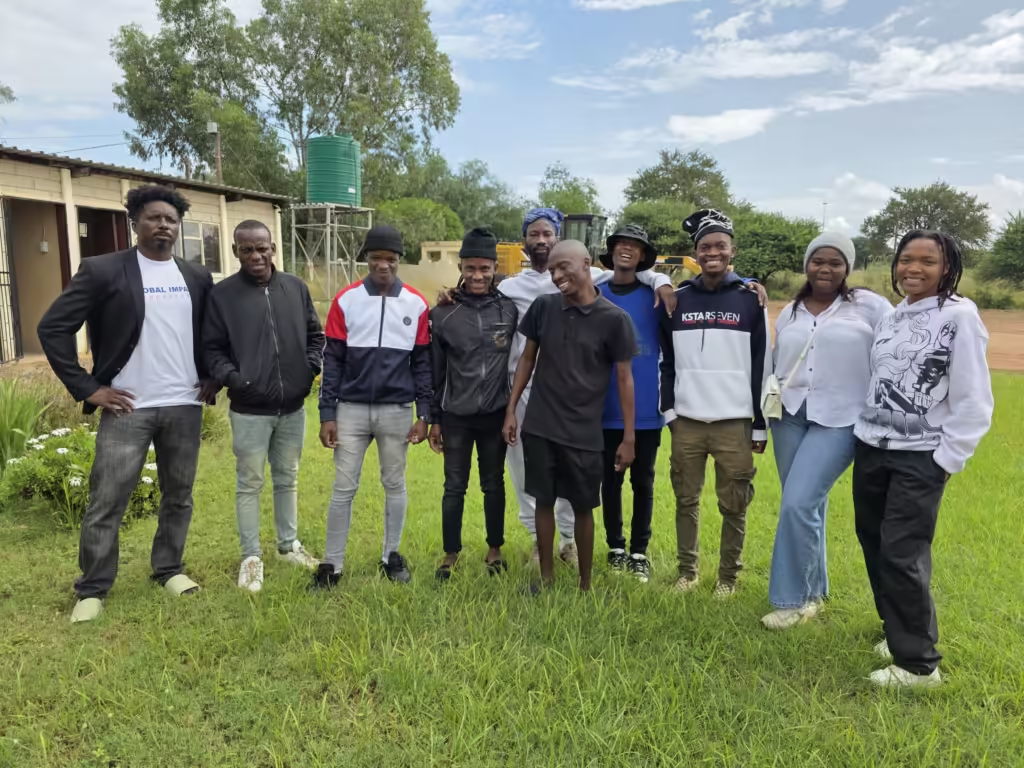
South African village entrepreneurship began with a conversation in Bangkok, Thailand.. As my friend spoke of
South African village entrepreneurship began with a conversation in Bangkok, Thailand. As my friend spoke of his homeland—Ramokokastad, in South Africa’s North West Province—his eyes lit up with pride. He painted pictures with his words: rolling hills, vibrant community gatherings, and most strikingly, people who transformed daily struggles into stepping stones toward a better tomorrow.
“Our people have always been problem solvers,” he told me, “but sometimes they don’t recognize that their solutions could become opportunities.”
A Conversation That Sparked a Movement
Those words stayed with me, echoing in my mind as Global Impact Innovators took shape. What started as casual conversations about empowering rural communities through entrepreneurship and technology evolved into something tangible—a nonprofit with a purpose. Not to “save” communities like Ramokokastad, but to walk alongside them, recognizing that true innovation emerges from within.
Local Wisdom and Innovation in Ramokokastad
Though not a literal homecoming, my first journey to Ramokokastad resonated deeply. The two-hour drive from Pretoria showcased landscapes that mirrored the complexity of my own inner world. Entering the village, I discovered a surprising abundance: a surplus of kindness, creative thinking, and untapped potential.
We visited my friend’s family, where I met their neighbor—a woman whose wisdom would shape our approach. Looking directly into my eyes, she said:
“We don’t need people to build for us. We need people who see what we’re already building and join us.”
Her words weren’t just a welcome; they were a mandate.
Hidden Ideas in Plain Sight
Throughout Ramokokastad, young innovators shared ideas born not from textbooks but from lived experience. Some envisioned delivery systems for elderly neighbors. Others imagined ways to increase farm productivity using local resources. These weren’t just survival tactics—they were business models waiting to be recognized.
Entrepreneurship Training: From Ideas to Action
By March 2025, what began as WhatsApp messages became in-person workshops. I’ll never forget pulling into the community hall that first morning. Young people were already waiting—faces of determination and hope.
Our approach wasn’t to introduce foreign concepts. It was to reframe challenges. On day one, I asked:
“What frustrates you most about daily life here?”
The answers came quickly: unreliable transportation, limited seasonal produce, gaps in childcare. But we didn’t stop there. We asked new questions:
“How might we create a community-owned transportation system?”
“Could seasonal scarcity spark a food preservation business?”
Personal Visions, Collective Impact
Thapelo, once reserved, revealed his dream of creating a tech hub to train youth. Gomolemo wanted to start an educational program but hadn’t known where to begin—until now.
A young woman shared her grandmother’s recipes with reverence.
“This isn’t just business,” she explained.
“It’s preserving our heritage.”
Pertunia described her vision for sustainable livestock farming.
“No one should have to travel hours for fresh protein,” she said, outlining breeding and feed plans.
Mphoentle saw the need for wellness in the village. A fitness enthusiast in a place with no gym, she dreamed of creating a space for physical and mental health.
Tideimalo, following her mother’s path in fashion, imagined fusing tradition with modern design.
“I want the world to wear our stories,” she said.


Building Sustainable Ventures Together
These visions reflected a deeper truth: young people in Ramokokastad didn’t want to leave to find opportunity—they wanted to build it at home.
Our workshops introduced tools like business model canvases and design thinking. But the true transformation came when modern strategies met ancestral wisdom.
One key outcome is the proposal for the Rural Entrepreneurship Fund (REF). Its circular model reinvests profits into new ideas, fostering a self-sustaining cycle. These micro-investments will allow young entrepreneurs to test, validate, and scale their projects.
A Community Writing Its Own Future
Today, Ramokokastad is writing a story of transformation. The village of 5,141—92.8% Tswana speakers—is home to dozens of ventures now taking root.
This journey taught me that meaningful change doesn’t arrive from outside. It emerges when new perspectives join hands with existing wisdom. Global Impact Innovators didn’t introduce entrepreneurship to Ramokokastad—we revealed what was already there.
As the sun sets over the village, casting long shadows on community gardens, I recall my friend’s words from that Bangkok café. The whispers of Ramokokastad have become a chorus—a powerful reminder of what’s possible when people see their challenges not as barriers, but as seeds of possibility.
Find out more about us at Global Impact Innovators.
Author
Charles Kebbi
By Global Impact Innovators



